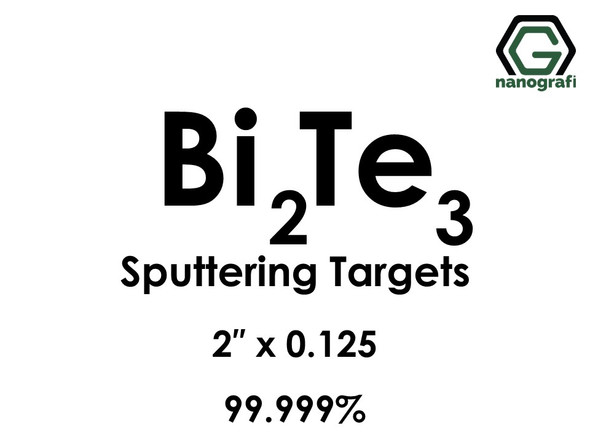Description
1 piece/1665 €
Please contact us for quotes on larger quantities !!!
Bismuth Telluride (Bi2Te3) Sputtering Targets
Purity: 99.999%, Size: 4'', Thickness: 0.250''
Sputtering is a proven technology capable of depositing thin films from a wide variety of materials on to diverse substrate shapes and sizes.
The process with sputter targets is repeatable and can be scaled up from small research and development projects. The proses with sputter
targets can be adapted to the production batches involving medium to large substrate areas. The chemical reaction can occur on the target
surface, in-flight or on the substrate depending on the process parameters. The many parameters make sputter deposition a complex process
but allow experts a large degree of control over the growth and microstructure of the area.
Applications of Sputtering Targets;
- Sputtering targets is used for film deposition. The deposition made by sputter targets is a method of depositing thin films by sputtering
that involves eroding material from a "target" source onto a "substrate" such as a silicon wafer. - Semiconductor sputtering targets is used to etch the target. Sputter etching is chosen in cases where a high degree of etching anisotropy
is needed and selectivity is not a concern. - Sputter targets is also used for analysis by etching away the target material.
One of the example occurs in secondary ion spectroscopy (SIMS), where the target sample is sputtered at a constant rate. As the target is sputtered,
the concentration and identity of sputtered atoms are measured using mass spectrometry. By helping of the sputtering target, the composition of the
target material can be determined and even extremely low concentrations of impurities are detected.
Sputtering target has also application area in space. Sputtering is one of the forms of space weathering, a process that changes the physical and
chemical properties of airless bodies, such as asteroids and the Moon.
Bismuth telluride with the chemical formula of Bi2Te3 is a gray powder that is a compound of bismuth and tellurium. It is a semiconductor, which, when
alloyed with antimony or selenium, is an efficient thermoelectric material for refrigeration or portable power generation. Bi2Te3 is a topological insulator,
and thus exhibits thickness-dependent physical properties.
Bismuth telluride based alloys are the most widely used semiconductor materials in bulk thermoelectric (TE) devices working around ambient temperature.
Very recently, nanostructured bismuth telluride based thin films have attracted particular interest across scientific and engineering disciplines, because they
break new ground in the promising applications such as chip-scale micro-cooler for thermal management of high-powered micro/nano-electronics and
flexible micro-power generator for energy harvesting. Due to the tremendous progresses in nanoscience and nanotechnology in recent years, the
thermoelectric performance of the bismuth telluride based alloys has been significantly enhanced, especially in the thin film materials with well-ordered
structures, which promote much higher thermoelectric efficiency than that of the bulk counterpart. Similarly, the numerous influences of the compositions,
microstructures, morphologies, thickness, stresstrain and substrate conditions on the thermoelectric properties of bismuth telluride based thin films are
intensively reported in the literatures.










